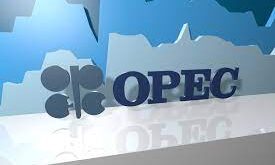The Director of International Affairs at the National Iranian Oil Company (NIOC) said the impact of the fall in crude oil prices by more than $55 on Monday, April 20, on the East Asian market was about $3 as WTI is not used as a benchmark for pricing Iranian crude oil.
The oil market witnessed a historic day on April 20 as the price of US benchmark, West Texas Intermediate (WTI), tumbled to minus $40 a barrel as storage reached capacity at its delivery point in Cushing, Oklahoma.
WTI is known as a light sweet oil because it contains 0.24% sulfur, making it sweet, and has a low density, making it light. It is the underlying commodity of the New York Mercantile Exchange’s (NYMEX) oil futures contract and is considered a high-quality oil that is easily refined.
Saeed Khoshrou, director of international affairs at NIOC, told Shana about the main reasons behind the historic crash: This price crash was mostly the result of traders seeking to offload any obligations to take on physical product ahead of the May contract’s expiry while there was believed to be little capacity left for storage of the physical deliveries.
He noted that the price of WTI crude since February and the outbreak of the Coronavirus pandemic was in the state of Contango, and on April 20, as the expiration date of May contract approached, while various reports indicated that the Cushing storage facility was rapidly filling up.
Contango is a situation where the futures price of a commodity is higher than the spot price. Contango usually occurs when an asset price is expected to rise over time. This results in an upward sloping forward curve.
According to the latest official figures, 72 percent of the facility’s capacity was filled by April 10, and it was likely that storage would not be possible by the end of the month, Khoshrou said.
He said the price of WTI crude opened at $17.73 a barrel on April 20 and fluctuated mildly in a downward sloping forward curve. But abruptly, in the last four hours of trading, prices tumbled to $4, $0, and -$40, respectively, to finally close at $37.63 a barrel.
Oil Trade in NIMEX
Crude oil is traded in both the physical and stock markets. In the physical market, the cargoes are traded by real producers and consumers, but stock market transactions are not limited to real owners and applicants. That’s why the volume of crude oil traded on the stock market is much larger than the real crude oil on the physical market.
One of the most important differences between trading in the physical and stock markets is that in the physical market, the actual shipments are traded, but in the stock market, contracts are traded. For this reason, stock market transactions do not normally result in the physical delivery of cargo, but are generally settled in cash.
According to Khoshrou, the daily sales of US crude is about 13 million barrels per day, while only in NYMEX, roughly 1.2 billion barrels of crude is traded on a daily basis.
He pointed out that each contract in NYMEX traded in the form of 1,000-barrel lots, stating that it takes one month for each consignment to be delivered (both in the physical market and on the stock exchange), the price of which is based on that consignment. For example, the price of WTI on April 20 was the price of cargoes that were delivered in May (two calendar months later).
Khoshrou added that with the arrival of today (Tuesday, April 21), the trading deadlines will end for May contact, and from April 22 to May 20, the next month’s transactions will begin.
Stock market traders have to settle their contracts until the end of trading hours of the expiration date. Otherwise, they will be required to take on the physical product from the Cushing Oklahoma Storage Facility, where it will be stored and delivered.
Deliveries take place within the delivery month. That is, if a May contract is not settled by April 21, the contract holder must pick up the shipment one day in May, Khoshrou explained. So the price of the products in the expiration date is not usually real and sellers have to sign contracts to sell cargoes at prices lower than usual so they don’t have to physically deliver the shipments.
Iran Crude vs. WTI
The negative price of WTI crude caused a major concern for Iranian oil and its depreciation, and the question arose as to what would happen to Iranian oil. Asked this question, the NIOC official explained: Iran does not trade any type of crude oil in any market based on the WTI benchmark. This is a special issue for WTI crude for May delivery.
He noted that Iran’s crude oil price index is ICE Bwave and the average crude oil prices in Dubai and Oman.
The Persian Gulf to Europe are priced against an average of trades in the ICE Brent crude oil futures contract; this is called the Bwave (Brent Weighted Average).
Iran’s main oil market is East Asia, with the average price based on Dubai and Oman crudes, and was traded at $20/b and on Tuesday closed at $17/b. moreover, the price of Iranian crude oil in the European market, which is based on Ice Bwave and delivery in June, closed more than $25 a barrel yesterday.
Asked if it was possible for WTI prices to rebound at maturity dates in the coming months, Khoshrou said: It depends on the stockpiling on that date, but the outbreak of the coronavirus has drastically reduced consumption of petroleum products, and this is one of the main reasons for the price crash.
He described the oil market forecast for the coming months as very difficult: According to various sources, including the Organization of the Petroleum Exporting Countries (OPEC) and the International Energy Agency (IEA), demand for crude oil in the coming months will fall from 10 to 30 million barrels per day.
The NIOC official further touched on a historic event in the oil market, saying: WTI crude has been struggling for years with the problem of limited storage capacity in Cushing landlocked facilities. The limited storage capacity in the city of Cushing, Oklahoma, at a time led to a price slump for US crude against less quality crude which is why Saudi Arabia as of January 2010, decided to change its base price for Asci for US deliveries.
Khoshrou emphasized: Now that old problem mingled with the new problems caused by the contagion have wreaked havoc on the demand side resulting in such unprecedented events in the market.
 Iran Energy News Oil, Gas, Petrochemical and Energy Field Specialized Channel
Iran Energy News Oil, Gas, Petrochemical and Energy Field Specialized Channel




